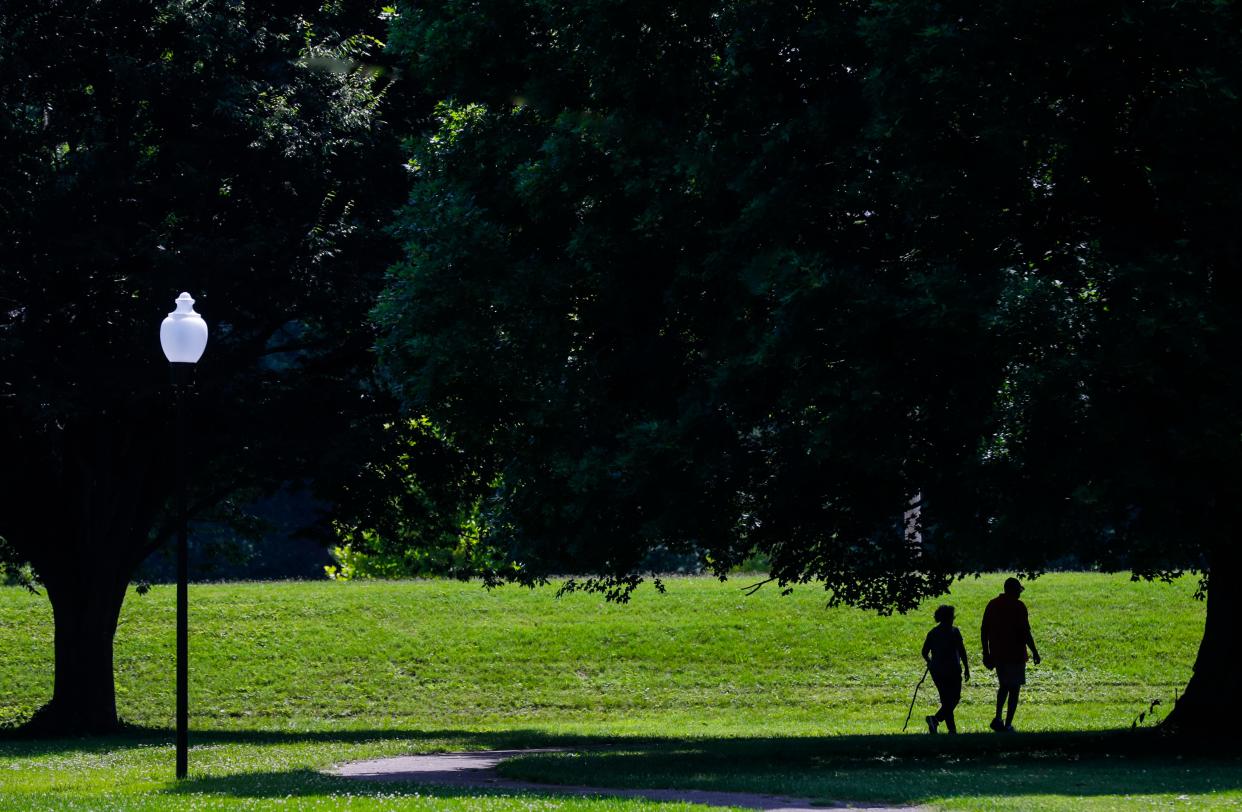Gerth: Is Louisville's Chickasaw park a symbol of pride or a sign of a racist society?

Chickasaw Park is a curious place.
It started out as a symbol of Jim Crow — built so Black people wouldn’t use Shawnee Park and other playgrounds that white people used — and somehow, some way, it became a cherished part of the Black community.
“It was our backyard. It was our playground. It was our country club,” said Cheri Bryant Hamilton, who represented the area as an alderman and city council member, and who grew up across the street from the park in the 1950s and 1960s.
In some ways, it’s hard to imagine that the park didn’t go the way of Black-only water fountains and seats in the back of the bus reserved for Black people. Its existence was just as hateful as those other relics.
The park opened in 1922 — not far from the old “Little Africa” section of town — as a place where Black people could go. The idea then was that they would leave the parks that were primarily meant for the white people alone.
At that point, Black people were still allowed to use Cherokee, Iroquois and Shawnee parks if they wanted, but they really weren't welcome.
Within two years, Black people were relegated only to Chickasaw and a few park playgrounds.
The city park board took that action after a couple of Black teachers got into a ruckus with park security officers at Iroquois Park when officers ordered them to take a group of Black kids off a playground so white kids could use it.
According to the National Park Service, Chickasaw is believed to be the only park designed by the Olmsted brothers specifically for Black users.
The park, at first, wasn’t beloved.
It didn’t have the amenities of the other parks and was just a fraction of the size of the big three.
In a 1927 letter to the editor of the Courier Journal, urging voters to support Democrats in the next election, a group calling itself “The Colored Lookout Committee” wrote slamming it.
“Can you forget or forgive the unjust and unfair order issued by the Republican Park Board to the effect that no Negroes would be allowed in any of the public parks of Louisville, except Chickasaw Park, which in reality is not a park in comparison to the other parks in Louisville?”
There wasn’t a golf course like there was at Cherokee and no amphitheater like there was at Iroquois.
The ban, originally put in place by the old Louisville Park Commission, remained in force until 1955 when they city, under the direction of Mayor Andrew Broaddus, quietly quit enforcing segregation in all parks, except for city swimming pools.
In December of that year, in response to the Supreme Court decision in Brown v. Board of Education and a later case opening Baltimore parks to all, a state appeals court desegregated all parks in Kentucky.
That following year, Hamilton’s family moved from Russell to the edge of Chickasaw Park.
For 6-year-old Hamilton and other children, the history of the park didn’t matter. It’s where kids learned to fish in the Ohio River and teenagers learned to drive.
Hamilton, who was born in 1950, said many kids her age didn’t even know about the park’s Jim Crow history. “I think our parents tried to protect us from that,” she said.
She remembers it as a place where kids would go to play, where teachers would teach kids how to play tennis, and where teenagers would go to be seen.
It was a place where Cassius Clay would go to run after he returned home from winning the gold medal at the 1960 Olympics in Rome — before he would become Muhammad Ali.
It was the site of family reunions and church picnics.
Hamilton said old men would sit on benches in the park and hold court — and correct children who got out of hand and tell the kids to pick up after themselves.
“It was a safe place for us,” she said. “We felt safe, we felt secure.”
There was a bandstand there, and a pavilion and a lodge. And a concession stand.
“It was our backyard,” said Jason Williams, who like Hamilton, grew up near the park.
More: Gerth: 'Transparency' to Greenberg apparently means keeping Louisville in the dark
“We did everything there,” he said. “Baseball, football. Mr. (Arthur Lloyd) Johnson showed us how to hit a proper backhand there.”
It’s played an integral part of his entire life — largely as a place to play on some of the only free clay tennis courts in the country with the West Louisville Tennis Club as an adult.
Over time, the park has lost some of its draw as Black people can use any park they want.
And, for now, at least, the park is a mess as it goes through a $2.5 million rehabilitation project to build walking paths, add better lighting, an ADA-accessible kayak launch, and to rebuild the park’s pond, which has been fouled by toxins over the years.
It will be more difficult to clean the pond than it was to remove the stench of Jim Crow from Chickasaw Park — that stench went away with time and good memories.
Joseph Gerth can be reached at 502-582-4702 or by email at jgerth@courierjournal.com.
This article originally appeared on Louisville Courier Journal: Louisville's Chickasaw Park: From symbol of racism to source of pride

